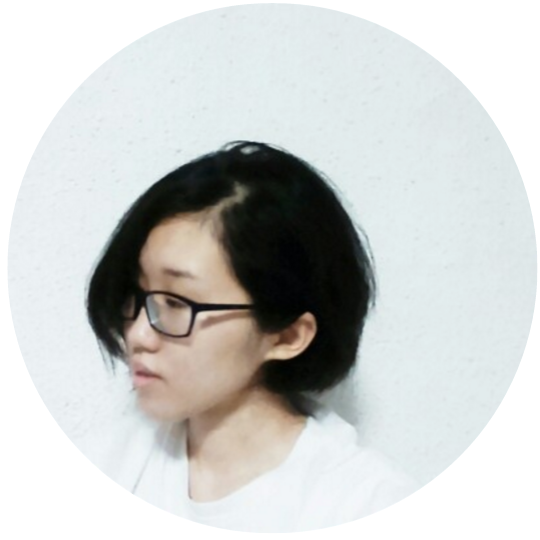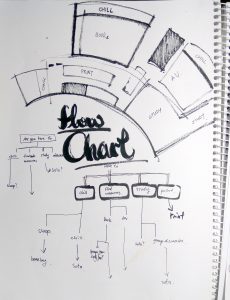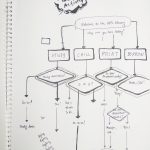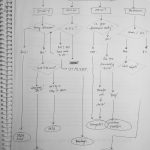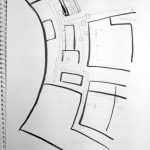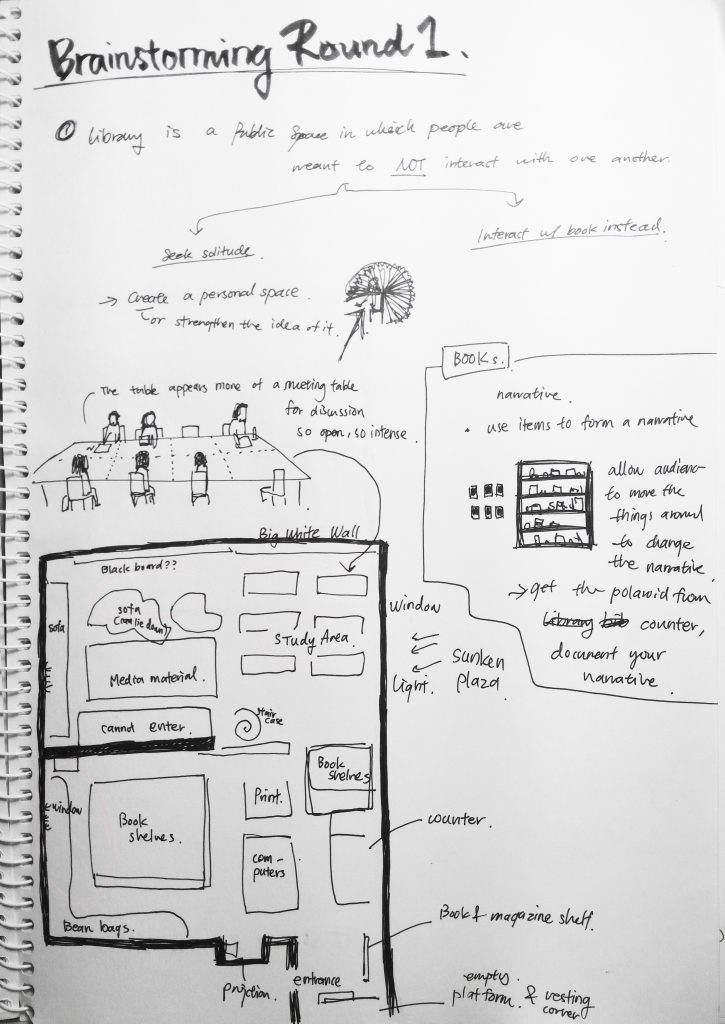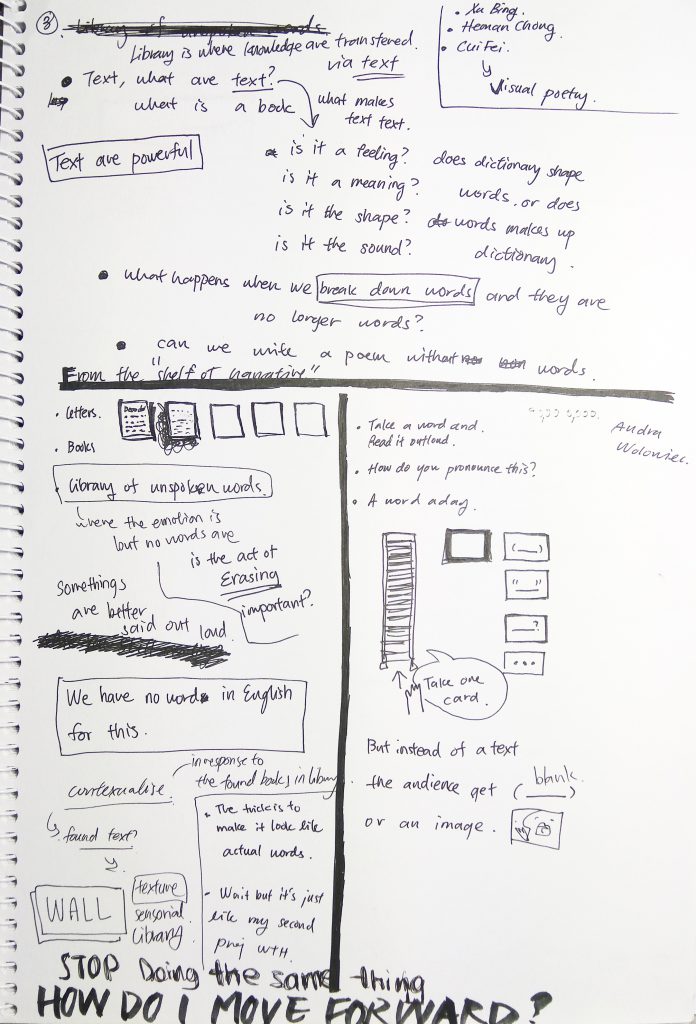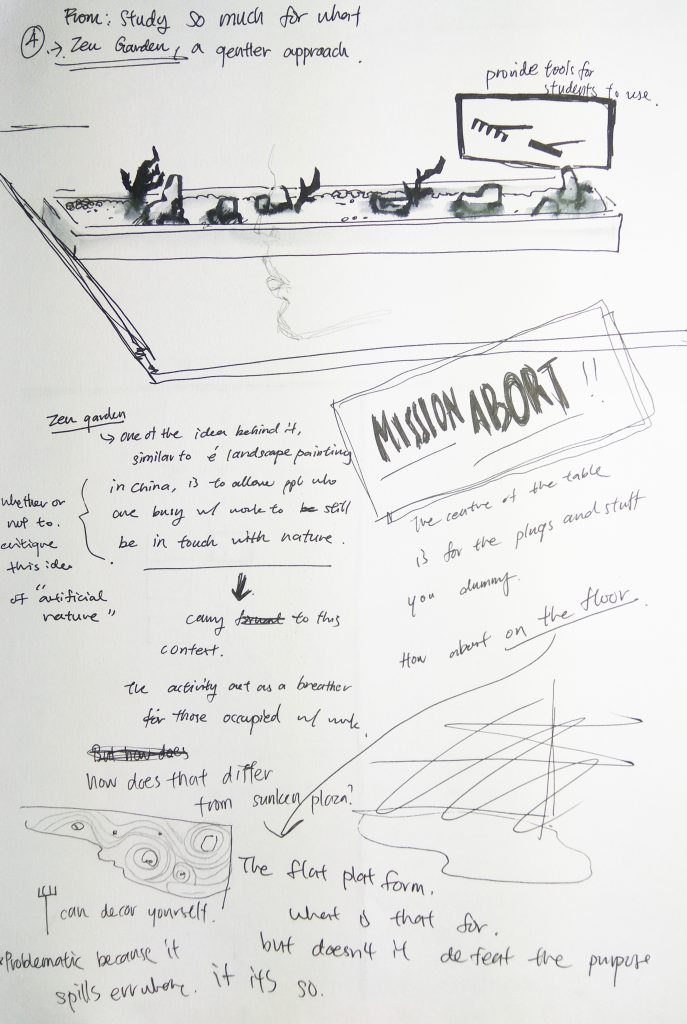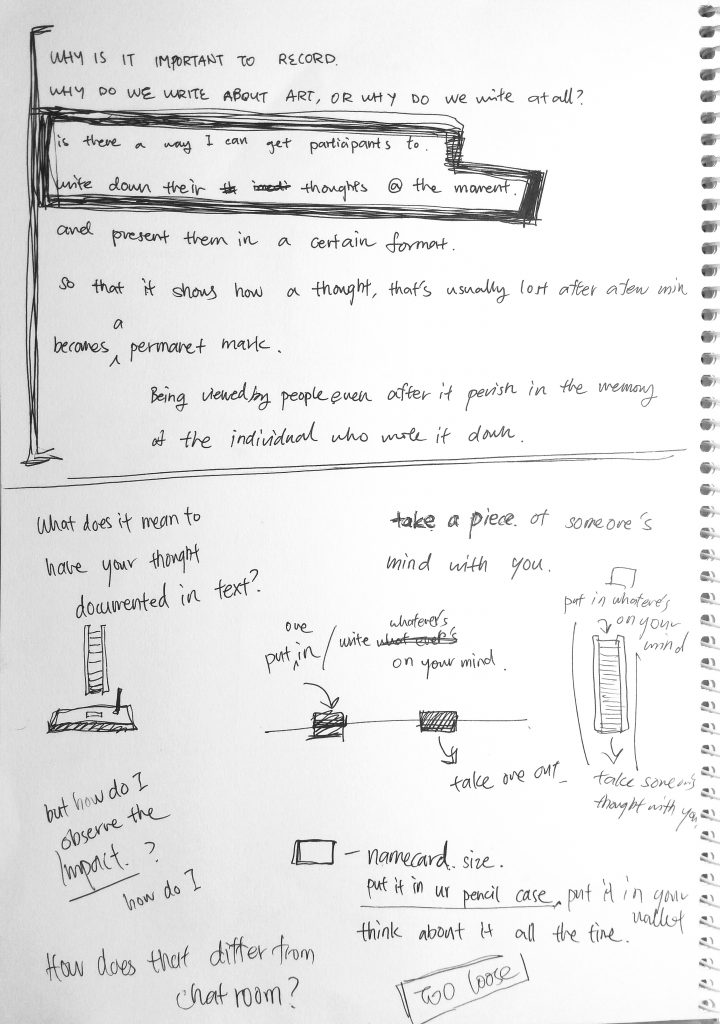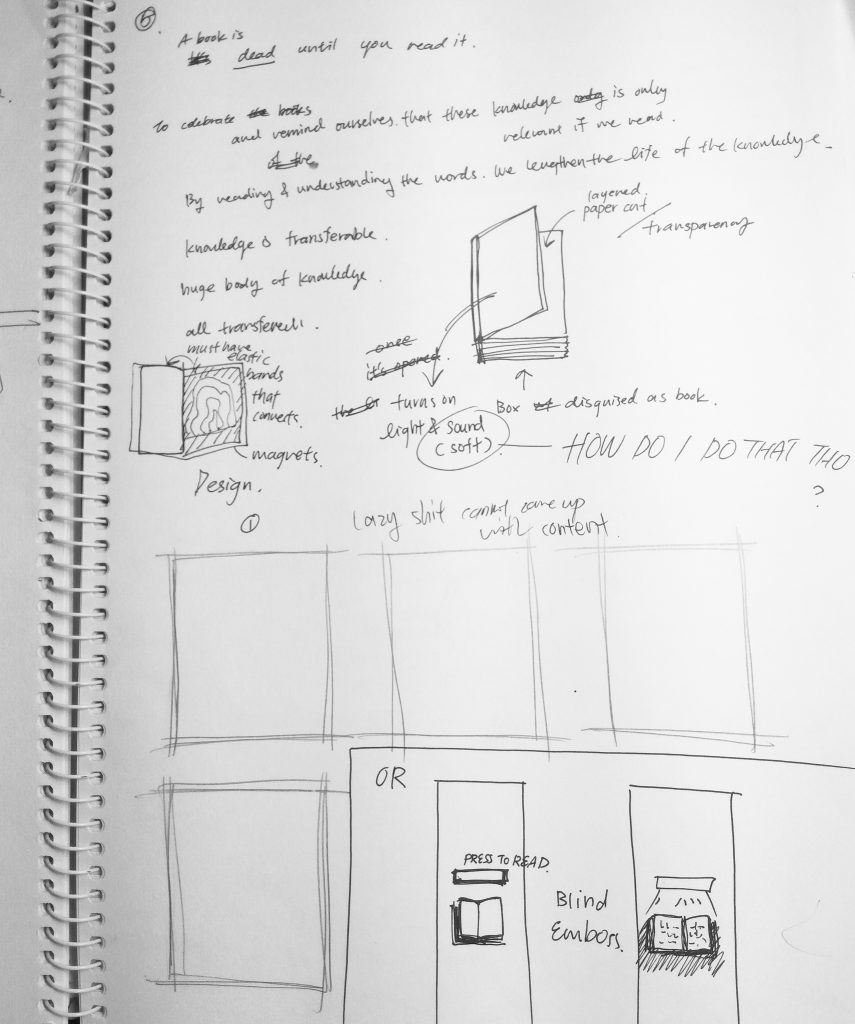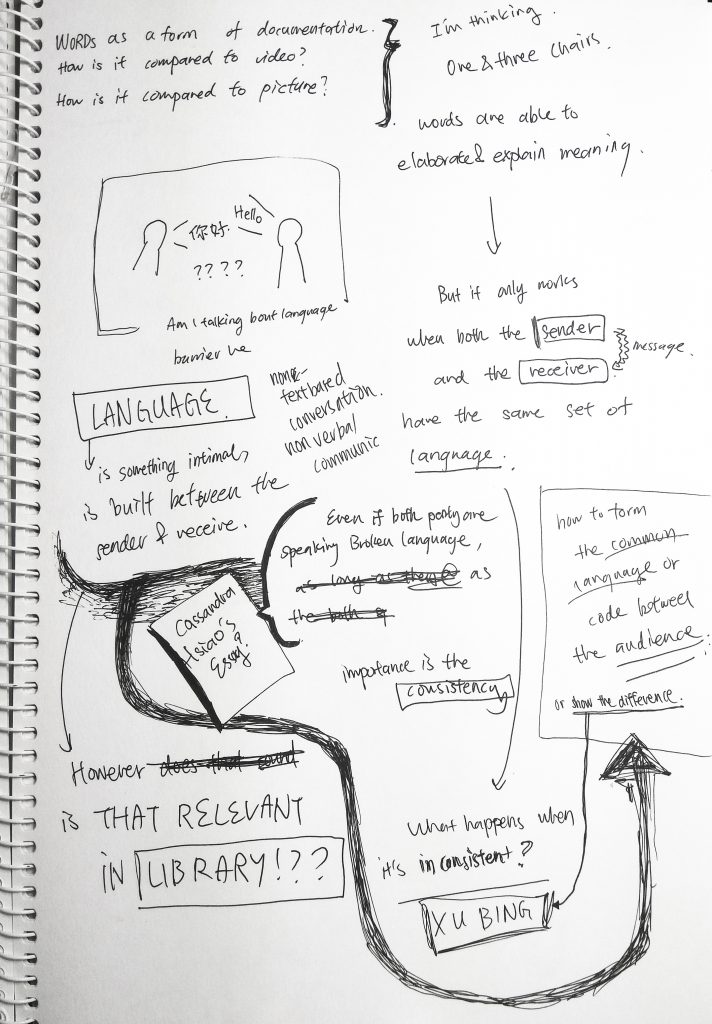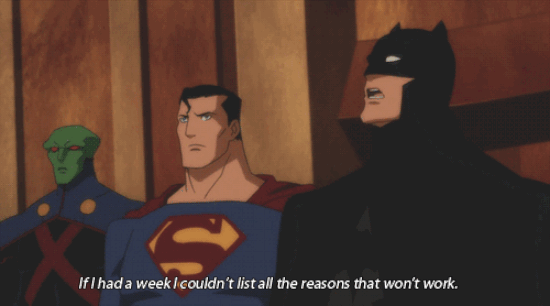
When I ask Dawin what he thinks about library, he said there’s too much words and he’d prefer all information to be in the form of graphics.
Why are words important, why do we record things in words? What is the significance of texts?
library is where the knowledge from the past are being kept alive, where ideas are delivered from past to present via text on paper. Therefore the first round of research I did revolves around artist who deals with words.
Here are the selected artists and works from my research:
TEXT ON BILLBOARD IS A SILENT ROAR
Jenny Holzer
Truisms

Truisms is a text series of nearly 300 aphorisms (or not) that Holzer had devised, with the intention of generating debate and evoking critical thoughts. These sentences or phrases are printed on paper and pasted anonymously in public areas. The project was later expanded to include more public communication device such as posters, stickers and t shirts. In 1982, the series of test were displayed, with time intervals between each sentences, on a LED signboard in Times Square.
IMHO, even though I do enjoy her list of sentences, the earlier presentation of the work did not appeal to me. There seems to be an intention to blur the distinction between everyday life and art, based on the crude and unrefined method of presentation. I can’t help but feel that, as thought provoking as the words are ( and as true as I find some of them are), the act of placing them in public domain using posters appears more as intervention, and printing them on shirts makes it seem like another product that tries to show off “individuality” using statement. (But again it might just be me being judgemental) When the presentation fails to do justice to the words, they fall short of the desired impact, and become just another statement you find during a protest or printed on commercial product.
In contrast to that, her most iconic medium, the LED lights, already has its implicatioin. The LED light sign board are usually designed for public announcement, be it for weather, time or traffic condition, while the billboard are usually for advertisements. None of them are designed to make personal statement or even slightly radical thoughts. That jarring difference between the nature of the message and the medium is what makes the viewers stop and go “what?” , allowing it to intrude the thoughts of the viewer and provoke thinking.
About the artist/ Text Source
List of sentences from the Truisms
WHAT IS TEXT WITHOUT MEANING
Xu Bing
Book from the sky

Upon entering the installation, one might be intimidated by the overwhelming presence of the words surrounding them. The words, black in colour, high in density, draping gently overhead, impose an invisible weight on the viewer.
In Chinese, Book from the sky (天书) is a term used to describe text or idea which are too difficult to understand. A closer look at the work would reveal to the viewer its nonsensical nature and how the work fit into this title. Every character found in the room is formed by elements of Chinese characters, making it look like Chinese. But none of them are existing Chinese word, rendering the sea text unreadable and impossible to comprehend.
The clear irony here draws a big question mark: why should there be words when we can’t read them? What happens when we can’t read the existing words? The choice of medium, books and texts also brings to mind question regarding the significance of education and text. How does works and meaning appear in the eye of illiterate and foreigner?
About the work
TEXT GIVES MEANING, TEXT CREATES REALITY
Joseph Kosuth
One and Three Chairs

One of my peers once asked “What’s the point of writing about art, especially when people either ”
In One and Three Chairs, viewers are presented with three different forms of “chair”. An actual chair, a photograph of a chair and a dictionary explanation of the words “chair”. When all three forms are put side by side we can’t help but ask ourselves: which is a better representation of the chair itself?
“The actual chair is a chair because I am able to sit on it, it is able to fulfil its purpose.”
Does that mean being an artwork in the museum makes the chair not a chair , since the audience are not allowed to use it like a chair? In that case the actual chair is degraded to nothing more than the other two forms.
To me the work is simple and effective in provoking thoughts on reality.
What we see must be real. What we know must be real. What we touch and use must be real. But are they?
About the work
About the artist
